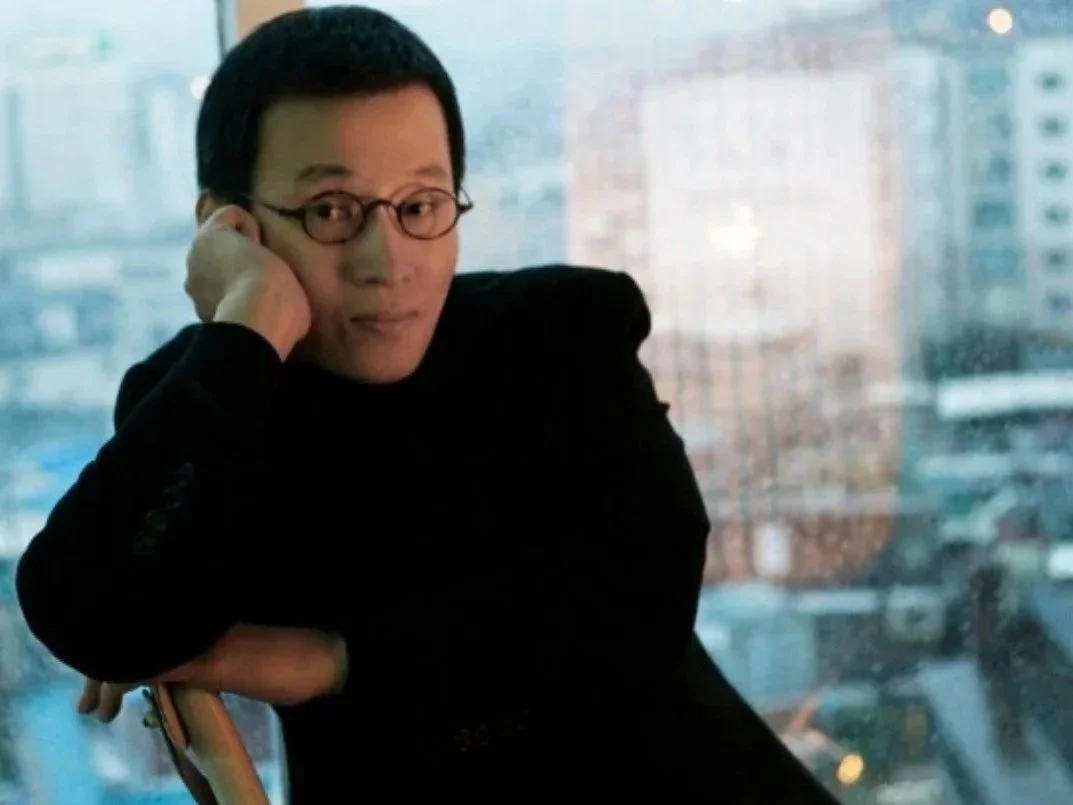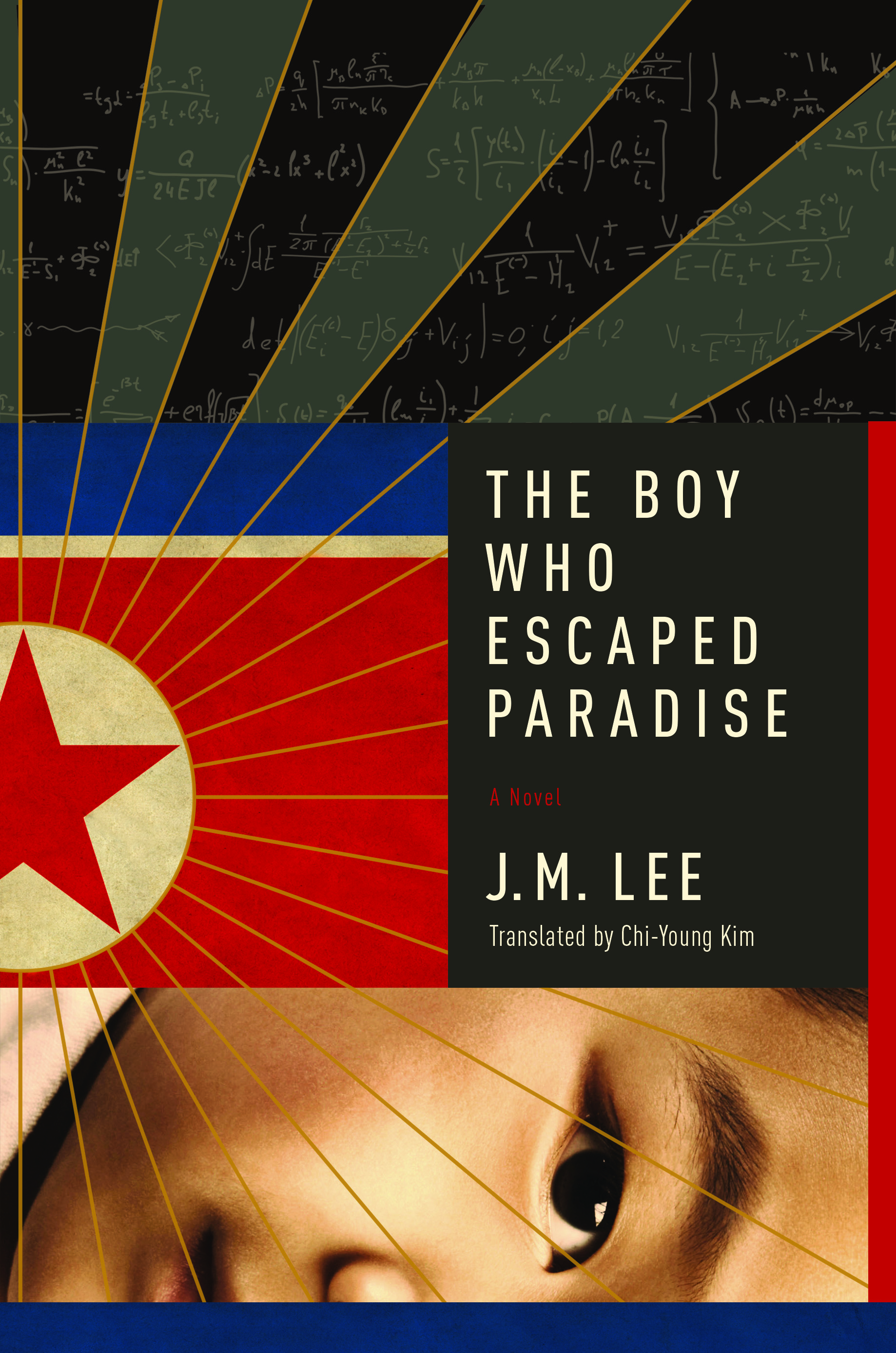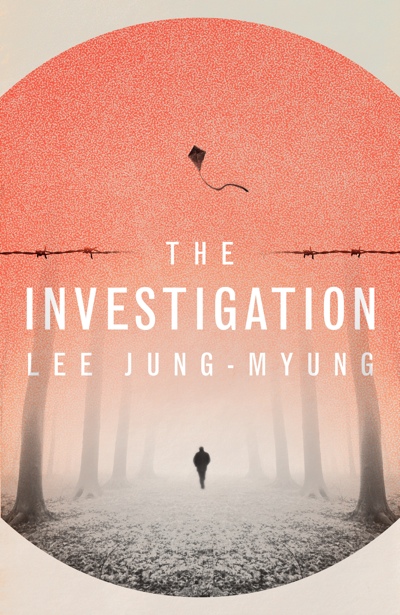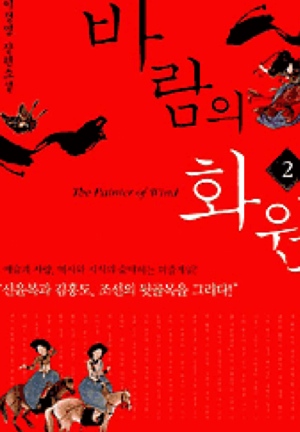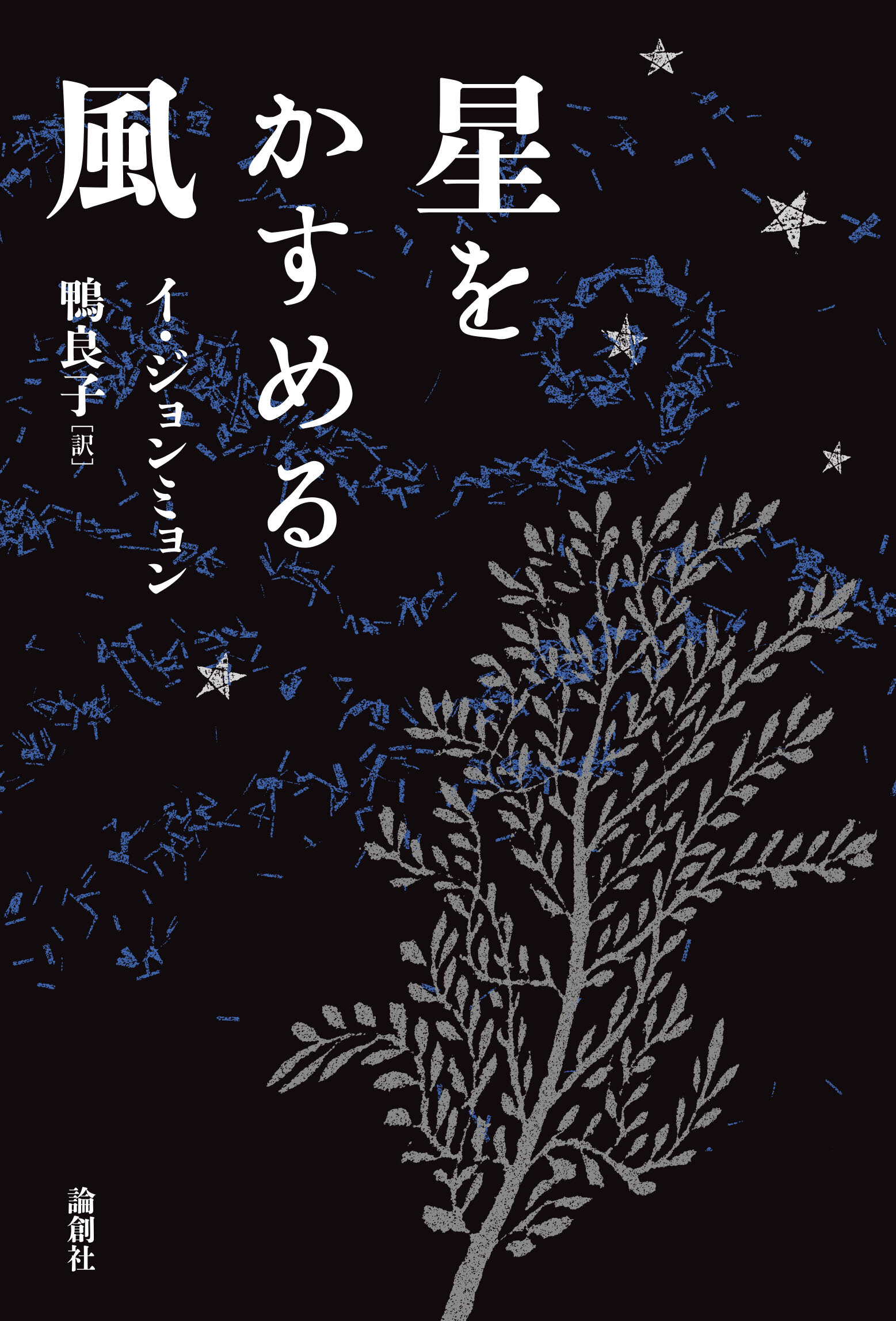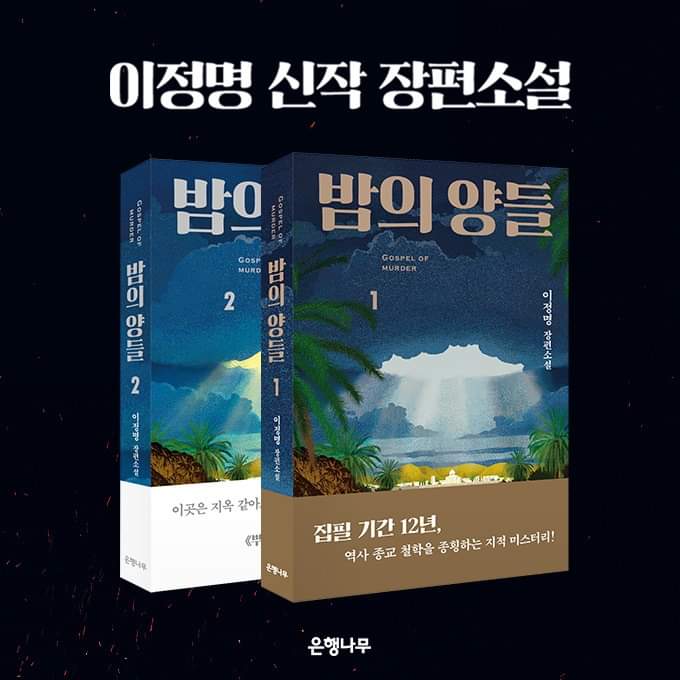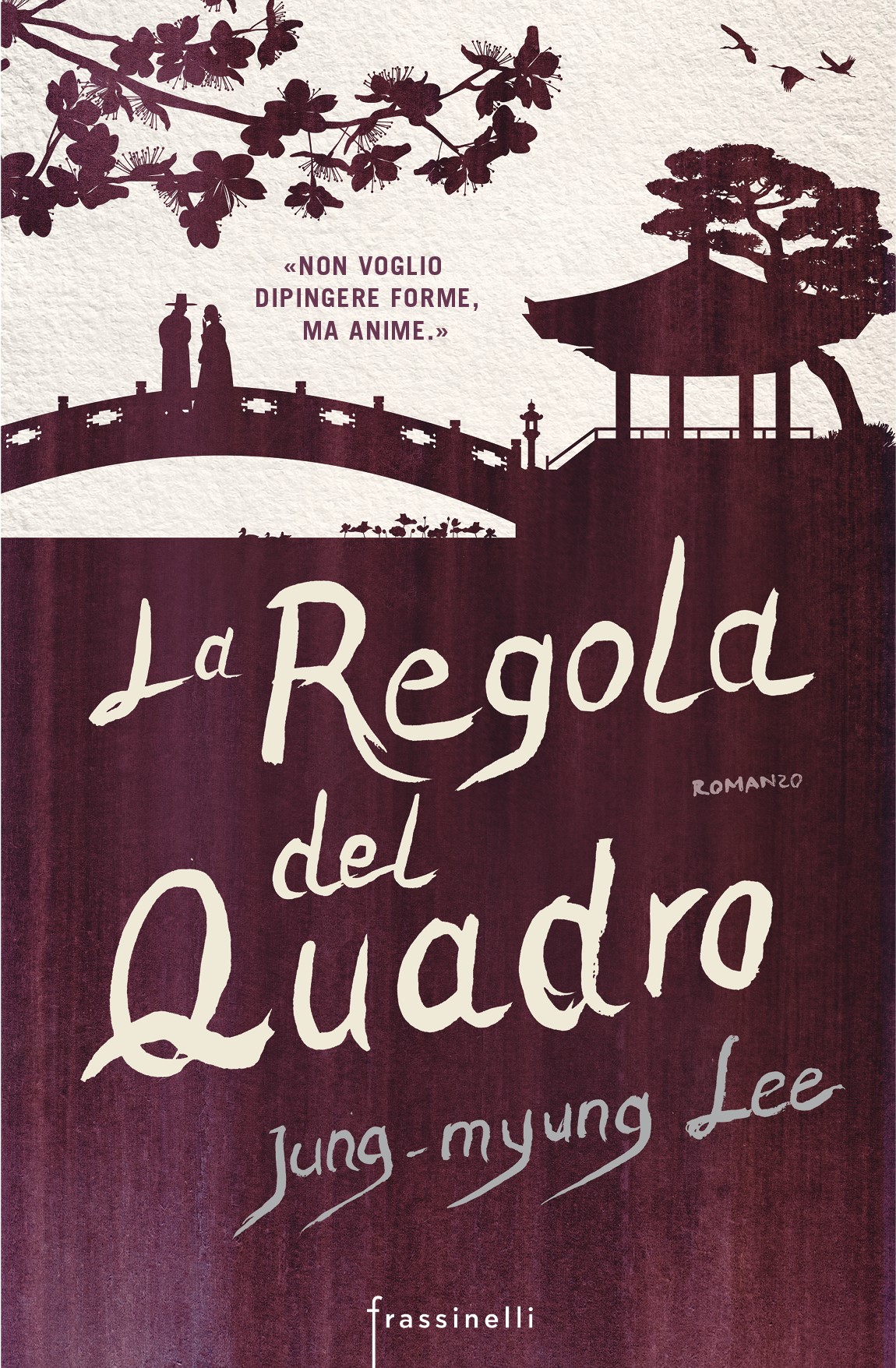JM Lee
From J. M. Lee, a bestselling phenomenon in Korea, comes a haunting and mind-bending novel about the revolutionary possibilities of AI and the infinite mysteries of what it means to be human.
Books
Artificial Truth
Artificial Truth will be published in English by Amazon Crossing in December 2025.
Raises questions about being human in an AI-dominated world — an engrossing and thought-provoking novel.
View full press release ↗
In the virtual city of Alegria, fantasies are made real, innumerable lifetimes are lived, and even death itself is a survivable experience. An escape from reality that changed the landscape of artificial intelligence, it is home to more than one hundred million people.
Though it’s been six years since Alegria’s creator—revolutionary tech genius KC Kim—died of cancer, his legacy is alive in the pinnacle of KC’s genius: an AI named Allen who surges with KC’s memories. As hard as KC’s widow, Minju, and her new husband, Junmo, try to move on, Minju can’t shake the unnerving feeling that somehow, from somewhere, KC is watching. She sees a stranger who bears an uncanny resemblance to him. A pair of KC’s custom-made shoes arrive at her doorstep. And someone has booked a Tokyo hotel room where she and KC shared happier times. Certain of nothing except KC’s mad innovation, Minju can only imagine what he is accomplishing without even existing. If KC is reaching out from an infinity of memories, what are his plans for Minju and Junmo, and how can they hope to escape KC’s all-seeing grasp? And whose plans are they, really? The possibilities are frightening.
J. M. Lee’s books have sold millions of copies in Korea, where he was born and raised. He is the author of Broken Summer, currently in production for a television series; Painter of the Wind, which was adapted into an award-winning South Korean television series; The Boy Who Escaped Paradise; and The Investigation, which was nominated for the Independent Foreign Fiction Prize and was the winner of Italy’s prestigious Premio Selezione Bancarella award.
Sean Lin Halbert holds an MA in Korean literature from Seoul National University. He is the recipient of the LTI Korea Translation Award for Aspiring Translators, the Korea Times Modern Korean Literature Translation Award, and the GKL Translation Award.
Artificial Truth is his seventh book in translation. Sean lives in Seoul with his wife and daughter and teaches at LTI Korea Translation Academy.
The Boy Who Escaped Paradise
Sold to Jessica Case, Pegasus Books/North America , to be published August 2016 in hardback.
Chi Young Kim,translator.
Million Books/Korea
A cinematic story about the bonds of loyalty and the murky line dividing truth and falsehood, The Boy Who Escaped from Paradise follows the decade-long odyssey of Ahn Gil-mo, a young autistic math genius who interprets the world through numbers, formulas, and mathematical theories as he escapes from the most isolated country in the world and travels the world, searching for the only family he has left. The novel begins with a murder in New York; the victim’s face has been wiped with disinfectant and numbers and symbols are written in blood around it. Gil-mo is arrested on the scene. Because of his North Korean background and his crime-filled escapades, the CIA becomes involved in the investigation, and one operative, Angela, uses various mathematic theories to gain his trust and access his thought process. The narrative veers into the past and back to the present as Angela begins to unravel Gil-mo’s life story.
Born a son of a talented but disgraced Pyongyang doctor, Gil-mo is living a fairly privileged life until his father, a secret Christian, is incarcerated in a political prison overseen by a harsh, cruel warden. With nowhere else to go, Gil-mo is imprisoned with him. Gil-mo manages to parlay his math skills into an office job instead of being forced into hard labor like most of the other prisoners. His mentor, a fellow prisoner who oversees Gil-mo’s accounting tasks, has a daughter, the spirited Yeong-ae, who becomes a good friend. A dreamer who craves a bigger life for herself, she later escapes from prison. The warden causes the death of Gil-mo’s father, and after that life-changing event, Gil-mo escapes the prison to try to track down Yeong-ae. He ends up escaping the country with another lost soul who goes by the name Flying Fish, and becoming involved in the underworld at the North Korean-Chinese border. Gil-mo and his friend head to Shanghai, ferrying drugs, before being taken in by Kunlun, a major crime boss. With Gil-mo’s discovery that Kunlun’s accountant is stealing from the powerful head, the young man becomes Kunlun’s trusted assistant and accountant. As Gil-mo begins representing his boss in various business transactions, he discovers that Yeong-ae has become Kunlun’s latest lover.
Kunlun, however, is assassinated, and Yeong-ae flees Shanghai. Gil-mo and Flying Fish make it to Macao, following rumors that Yeong-ae has settled there. The two become legendary gamblers, counting cards and swindling casinos, and as they begin to make piles of cash, they bump into Yeong-ae, who is working as a singer at a club. But after one too many an illegal game, a shootout ensues. Flying Fish is killed. Meanwhile, Yeong-ae has fled to Seoul and Gil-mo follows. In Seoul, Gil-mo is released into the custody of the prison warden from North Korea, who, with Yeong-ae, uses Gil-mo as a pawn in inheritance fraud. By the time Gil-mo discovers this, the warden and Yeong-ae have fled to New York.
In New York, the warden obtains a green card by providing authorities with false information about North Korea’s nuclear program while pimping Yeong-ae out to find new victims of fraud. He becomes increasingly hungry for power. Meanwhile, Gil-mo decides to follow Yeong-ae and enters the U.S. illegally via Mexico. He works at a sushi restaurant and by chance meets Yeong-ae, who is a frequent customer as the girlfriend of an important financier. To save Yeong-ae, Gil-mo kills the prison warden.
Over seven days in captivity, Gil-mo reveals these crimes to Angela through seven mathematical puzzles. Angela comes to believe that Gil-mo has an intellectual disability and cannot be held accountable for the murder. But is she merely a pawn in Gil-mo’s plan, or is he truly innocent of everything that happened?
Through extensive research, celebrated author Jung-myung Lee delves into aspects of North Korea that are not widely known, including the daily lives of Pyongyang citizens, card sections in mass games, the USS Pueblo incident, the underground Christian movement, and the Asian drug trade, while depicting lifelong friendships nurtured despite severe persecution and famine. This rollercoaster of a novel draws the reader in with vivid characters trapped by ideology, greed, and despair, questioning the gray line between good and evil, truth and falsehood, purity and depravity. Through it all, Lee’s characters preserve their humor, belief in love, and passion for freedom.
This fast-paced, thrilling read will resonate with anyone who has yearned for a different life. The Boy Who Escaped from Paradise is reminiscent of Adam Johnson’s The Orphan Master’s Son, Jonas Jonasson’s The 100-Year-Old Man Who Climbed Out the Window and Disappeared, Vicas Swarup’s Slumdog Millionaire, and Khaled Hosseini’s Kite Runner.
The Investigation
Translated by Chi-Young Kim
Paperback publication in UK – February 2015, Pegasus Books/US, August 2015.
Million Books/Korea. Pan Macmillan published in April 2014, Sellerio/Italy, winter 2014, Michel Lafon/France,Grijalbo/Spain, Fall 2014, Sold to Swiat Ksiazki Sp. z.o.o/Poland. Film being produced by Zion Entertainment , CJ Entertainment, director attached Kyu-Dong Min.
The novel opens with a bang in Fukuoka, with young prison guard Yuichi Watanabe tasked with solving the murder of fellow guard Dozan Sugiyama, who was feared and despised for his brutality. Before his conscription, Watanabe was a quiet, scholarly young man who spent the majority of his time in his family's used bookstore, reading classics from around the world-Shakespeare, Goethe, Rilke. He goes about enforcing prison rules without much verve, yearning for the war to be over and dreaming of returning to his former erudite life. At the beginning of the murder investigation, Watanabe believes it is an open-and-shut case. Choi Chi-su, a powerful and vocal leader of the Korean independence movement, had numerous clashes with the late warden, and he confesses immediately upon questioning. But Watanabe is not satisfied: why, after all, would a seasoned freedom fighter like Choi would confess so easily? He begins to interrogate Choi and Yun Dong-ju, a sensitive Korean poet incarcerated for participating in anti-Japan activities and widely respected by fellow inmates.
Watanabe finds a kindred spirit in Yun, and they tentatively begin to veer away from standard interrogations toward freewheeling discussions about literature and poetry. As he learns more about Yun, his poetry, and Yun's surprising bond with Sugiyama, Watanabe discovers an entirely different aspect of the late warden. The tale meanders back to Suigyama's life, during which he meticulously policed the prisoners both in person and as the official censor. Sugiyama's budding interest in literature is movingly interwoven with excerpts the late warden found meaningful; quotes from classics, Yun's own poetry, and banned books. Inspired by Yun's tragic life and his powerful posthumous collection of poetry, Lee celebrates the poet's work by situating it in the context of oppression and persecution Yun experienced during his lifetime. Lee's pulsating, action-driven prose is balanced by Yun's yearning for freedom, both for himself and his homeland, creating an elegiac tribute to the importance of literature and the tenuous bonds formed from a shared love of art and literature across barriers created by circumstance: the tension between the imprisoned and the guards; the colonized and colonizers; the oppressed and the oppressors.
Sugiyama is a compelling figure, whose brutal violence is informed by a traumatic tragedy in his formative years. The question of culpability in times of war is also deftly woven into this lyrical novel, deconstructing the psyche of the oppressor in humanistic ways and querying whether inaction in the face of brutality is just as unforgivable as committing a crime.
Lee's words leap off the page with urgency, embodying the fear and instincts of self-preservation that hinder one's own moral code from triumphing over cruelty, and create flawed but human portraits of both the Japanese and Korean characters.
This gripping novel is sure to attract a wide audience. Reminiscent of stories such as Rita Hayworth and Shawshank Redemption, The Investigator will appeal to those who enjoy Stephen King-like nail-biters as well as to those who are drawn to incisive, lyrical treatments of individual moral choices made during wartime, such as Chang-rae Lee's The Surrendered. The novel will also interest those who are drawn to World War II-era tales about war, humanity, and life as a second-class citizen. Wrenching and fierce, this novel allows the reader to empathize with the flawed and all-too-human individuals who are thrown together by forces beyond their control. This novel is especially potent in our current era, rife with of political imprisonment, oppression, and wars around the world.
The Gospel of the Murderer
Eunhangnamu Publishers/Korea, 2015. North American rights sold to Kate Miciak/Ballantine Bantam Dell. Translated by Man-Asian Award winning translator Chi Young Kim of PLEASE LOOK AFTER MOM, THE INVESTIGATION, THE HEN WHO DREAMED SHE COULD FLY. Partial in English,complete translation in six months. EunHaenNaMu/Korea GOSPEL OF THE MURDERER Translated from the Korean by Chi-Young Kim
An adrenaline-charged political thriller set in ancient Jerusalem, this electrifying novel charts the final days of Jesus. Four brutal murders shake the city to its core and Matthias, a former Temple guard, and Theophilus, a friend of the Romans, race against time to discover who is behind the serial killings terrorizing Jerusalem in the days before Passover. As a vast political conspiracy tightens a noose around Jesus and his followers, Matthias and Theophilus figure out who is behind the gruesome killings and try to determine how far they would go to uncover the truth. Celebrated Korean author Jung-myung Lee deftly weaves what we know about the life of Jesus into a richly imagined tale of loyalty, belief, and sacrifice.
The Painter of Wind
Published by Million Books/Korea and sold over 600,000 copies. Sold to Sperling/Italy, Hayakawa/Japan, People’s Literature Publishing House/China, Azoth Books/Taiwan
A sweeping historical romance with murder and mystery set in the world of royal painters during the Joeson Dynasty of the 18th Century, Inspired by real events and people, this panoramic spectacular story of art and intrigue involves a young female painter who was forced to disguise herself as a man in order to fulfill her artistic ambitions and become a famous painter. Only when she falls in love, is her secret revealed.
This has been compared to The Girl With the Pearl Earring.
An upscale commercial novel for readers all over the world.
The Korean book is 258 pages and the book has been adapted into a hugely successful mini-series and feature film in Korea.
Portrait of a Woman
Translated by Slin Jung. Million Books/Korea and sold over a million copies and produced as a multi part mini-series, one of the most award winning and most famous television series in Korea, ever. Published 2007 Sold to Sperling/Italy, Hayakawa/Japan, People’s Literature Publishing House/China, Azoth Books/Taiwan.
Author of Indepent Foreign Fiction Prize nominee for THE INVESTIGATION, Million Book,Korea (Macmillan published in April 2014, Sellerio/Italy, winter 2014, Michel Lafon/France,Grijalbo/Spain, Fall 2014 Swiat. Ksiazki Sp. z.o.o/Poland Film being produced by Zion Entertainment , CJ Entertainment, director attached Kyu-Dong Min.
and critically acclaimed THE BOY WHO ESCAPED PARADISE Pegasus Books WEL, Million Books/Korea.
Overview
Set in 18th century Korea, Painter of the Wind is the story of Court Painter Shin Yun-bok told by his instructor, colleague, confidant, and friend (or perhaps more), Kim Hong-do. Yun-bok is a brilliant artist constrained by the traditions of the Court, but finds an escape in the equal genius of the Court Painter Hong-do and the company of the Kisaeng Hyang. However, Yun-bok is expelled from the Court and Hyang is sold off to Kim Jo-nyeon, a wealthy merchant. Yun-bok is revealed to be a woman who disguised herself as a man to become a painter. Jo-nyeon, consumed with jealousy over Hyang and Yun-bok’s love, hosts an art duel between Hong-do and Yun-bok and forces their participation by threatening to expose Yun-bok’s secret and for Hyang’s freedom. The duel ends in a draw. Yun-bok helps Hyang escape the merchant and says farewell to Hong-do one final time, leaving behind a self-portrait of her depicted as a woman.
Plot
An older Hong-do recounts the tale of his former student Shin Yun-bok, who has disappeared long ago and only lives on in ludicrous rumors in the streets. He remembers the truth behind the artist, going back to their first encounter many years in the past.
Yun-bok is a student tat the Royal Art Chamber Academy and possesses great talent, but the Chamber’s oppressively standardized traditions drive him to leave its venerated halls. Hong-do, knowing that an artist cannot succeed in Joseon outside the Court, takes measures to keep Yun-bok in the Chamber. Meanwhile, the King orders an investigation into a decade-old political plot that led to his father’s unjust execution as Crown Prince, which leads him to a series of deaths from 10 years ago connected to the Royal Art Chamber. Hong-do himself finds himself drawn to the investigation, as one of the deceased was his mentor, and the other his friend. Yun-bok continues to attend classes at the Academy, and on an evening outing with his fellow classmates, encounters the brilliant Gayageum player Jeong Hyang, who peddles her talents at a Kisaeng house and is destined to be practically sold off to a wealthy patron.
The time for the Court Painter selection examinations draws near, and Yun-bok is convinced by Hong-do’s talent to remain at the Royal Art Chamber and learn from him. However, he refuses to follow the rigorous format of the exam. Yun-bok goes to Hyang and is inspired after an intimate evening with her to create a completely new work that defies the Chamber’s style.
The Court Painters scoff at Yun-bok’s submission, but the King’s judgment dictates that Yun-bok be accepted as a Court Painter. He also privately orders Yun-bok and Hong-do into a competition to depict the lives of commoners in painting form, in order to enlighten him to the needs of the people. The artists challenge each other and grow through their contests, and the King comes to see more of the world outside the palace. When the artists depict injustices occurring in the streets, the King takes measures to right such wrongs. As the competition continues, Hong-do finds himself irresistibly drawn to Yun-bok, and Yun-bok continues to visit Hyang at the Kisaeng house.
Meanwhile, the self-made merchant Kim Jo-nyeon, a shrewd man with a keen sense for the arts, is compelled to monopolize Hyang and her melodies. He purchases her from the Kisaeng house. The night before she must leave, however, Hyang summons Yun-bok for one final rendezvous.
Soon, the time comes for the Royal Portrait-Sitting. The King personally commands Yun-bok and Hong-do to take on the task. When the lengthy process of the Royal Portrait-Sitting ends, and the painters present the fruit of their efforts to the court, the politicians of the court are outraged to see that the King is depicted as smiling, which is unprecedented in the kingdom’s history. Even the King’s assurance that the painters had only reproduced what they had seen does not stop their criticism—the portrait is a complete departure from tradition in many other ways, in its use of color, the angle, and shading. Amidst the flurry of outrage, Yun-bok personally tears the Royal Portrait.
As a result, Yun-bok is expelled from the Royal Art Chamber and the palace. But the King, having grown to trust Yun-bok and Hong-do, gives Yun-bok one last order to work with Hong-do and find the lost Royal Portrait of his father the late Crown Prince, which holds the key to solving the mysterious deaths at the Royal Art Chamber.
Upon his expulsion, Yun-bok is sent by his father to the studio of Kim Jo-nyeon, whom Yun-bok must serve as his patron. Yun-bok does not mind the new arrangement, as he may have the chance to see Hyang again, find evidence about the lost Royal Portrait in Jo-nyeon’s massive studio, secure Jo-nyeon’s financial support for his father, and because he develops a reluctant respect for the man’s charisma and appreciation of the arts.
As Yun-bok adjusts to his new position and even sees Hyang from afar in his assignment to paint Jo-nyeon’s fetes, Hong-do comes to visit and sees that his skill has only grown further. He delivers news that their competition for the King is to continue. In their conversations, Hong-do senses something familiar about Yun-bok’s artistic habits—particularly his penchant for shadow-play—and fools Yun-bok’s father into confessing the truth. Yun-bok is not a son of the Shin family, but the child of Hong-do’s friend from the Art Chamber who died under mysterious circumstances 10 years ago.
Yun-bok continues his work for Jo-nyeon, who demonstrates his understanding of the arts by reading Yun-bok’s intentions in his work. One of the paintings depicts a young servant and a Kisaeng staring lovingly at him—something Jo-nyeon does not miss. He commissions one more painting from Yun-bok and confirms his suspicion that Yun-bok and Hyang love one another. Jo-nyeon is conflicted; he loves the brilliance of Yun-bok’s work but is too jealous to allow him to stay any longer.
Hong-do confronts Yun-bok with the truth about his parentage. Yun-bok discloses everything he knows, including that his real father had been secretly working on a portrait before his mysterious death. The portrait was of the man suspected of killing their mentor, for which Yun-bok’s father was killed.
Yun-bok and Hong-do find the portrait and the man depicted, which leads them to the truth behind the lost Royal Portrait—it had been painted by Hong-do’s late mentor in secret, with individual features of the late Crown Prince’s face hidden away in supposedly failed portraits for various noblemen. The portrait had to be hidden away because the politicians who conspired against the late Crown Prince could harm the now-King if the portrait, painted as a depiction of a monarch, was discovered. The artists put the portrait together and deliver it to the King.
With one heavy burden now behind him, Hong-do visits Yun-bok to examine his work and realizes that Yun-bok’s relationship with Hyang surfaces discreetly in his work. He also confronts him with the truth that Yun-bok is actually a woman. The revelation does not change the fact that the two artists must find the truth behind the deaths in the past. They find a clue in a painting by Yun-bok’s father in the form of visual wordplay, which points to Jo-nyeon as his killer.
Yun-bok continues her work for Jo-nyeon, but her feelings for Hyang continue to surface in her paintings, driving Jo-nyeon into a jealous rage. Jo-nyeon decides to hold a grand artists’ duel between Yun-bok and Hong-do, where both painters must put their reputations and careers on the line.
Yun-bok is reluctant, as Hong-do was her instructor and it would be improper for a student to challenge their own master. She also does not wish to risk her career. But she cannot openly defy her patron, and Jo-nyeon offers her another incentive: if Yun-bok should not lose, Hyang will go free. Yun-bok responds that she will defer to Hong-do’s judgment for the proposed duel.
Jo-nyeon goes to Hong-do with the proposal for the duel, and Hong-do declines. As an artist in the service of the King, it would be improper to consider such an indignity. However, Jo-nyeon claims that rumors are spreading that Yun-bok is actually a woman. He hints that if she does not make a high-profile appearance, the rumors about her being a woman will only grow and eventually threaten her. Hong-do reluctantly agrees to the duel. Jo-nyeon reveals that he realized Yun-bok’s true sex from the hints she accidentally left in her paintings. He promises Hong-do that if he does not lose, he will make certain to silence all rumors about Yun-bok.
As a man of great means and ability, Jo-nyeon goes about setting himself up for profit by taking bets on the competition. Nobles and other wealthy men enthusiastically take part, and the pot swells exponentially. The competition will decide once and for all which of the two master painters is the superior.
Meanwhile, Yun-bok confronts Hong-do about his acceptance of the duel and reveals that Hong-do is actually color-blind. He was able to pass off his condition because the Royal Art Chamber’s style does not use much color to begin with, and what color is used is highly standardized. She argues that this makes the competition unfair. But Hong-do counters that the judges will all be men, and the Yun-bok, who cannot fully understand the hearts of men, is also at a disadvantage.
The competition begins with the theme of ‘battle’. The judges discuss for a long time, uncovering the secrets hidden in each artist’s work, but are unable to decide on a winner. Both paintings are simply too excellent. The duel ends in a tie, to the disappointment of those who placed their bets on a clear winner. Jo-nyeon’s reputation is harmed because the people are let down. He also reveals he had made another bet behind the scenes with another nobleman who usually does not participate in gambling. The nobleman, who had acted in discreet cooperation with Hong-do, agreed to take part in the gambling this time by betting on a tie. Jo-nyeon, who had expected a clear winner, had bet against a tie with the odds greatly in his favor. Losing this gamble costs him everything.
And finally, Jo-nyeon is obligated to let Hyang go free. However, he reveals to her the truth about Yun-bok and refuses to honor the agreement. He stations guards around her chambers and allows Yun-bok one final visit. Yun-bok goes to see Hyang in private and switches clothes with her, allowing Hyang to escape in a man’s garb pretending to be Yun-bok while she remains behind in a woman’s dress. By the time Jo-nyeon realizes what has happened, Hyang is long gone. Yun-bok reveals that Jo-nyeon was the man who ordered the killings of the Court Painters 10 years ago, and that one of the deceased painters was her father. She had agreed to join the Shin family as their son in order to find the truth about his death. But now that Jo-nyeon’s crimes have been revealed, she has no more reason to maintain her assumed identity.
In the end, Yun-bok decides to paint a portrait of a woman with the aid of a mirror. A self-portrait. She tells Hong-do that true works of art are filled with the love of their creators, and that she could not have produced this piece if she had not sincerely loved herself for the woman that she was. Hong-do confesses that she is the better painter, entranced by the work.
An older Hong-do reminisces to himself about the events of the past. Yun-bok disappeared after painting her self-portrait, with nothing but rumors swirling in the wake of her departure.
Good Neighbor
Cold War thriller set in the world of the theater in Korea. A playwright, an actress and a director. Who is spying on who? In this page turning , literary thriller, the author called the Korean LeCarre, keeps us on the edge of our seats and lights up our minds. English partial available. Award-winning author and bestseller of THE INVESTIGATION, Pan Macmillan,Sellerio,Grijalbo,Belfond,and THE BOY WHO ESCAPED PARADISE,WEL.

